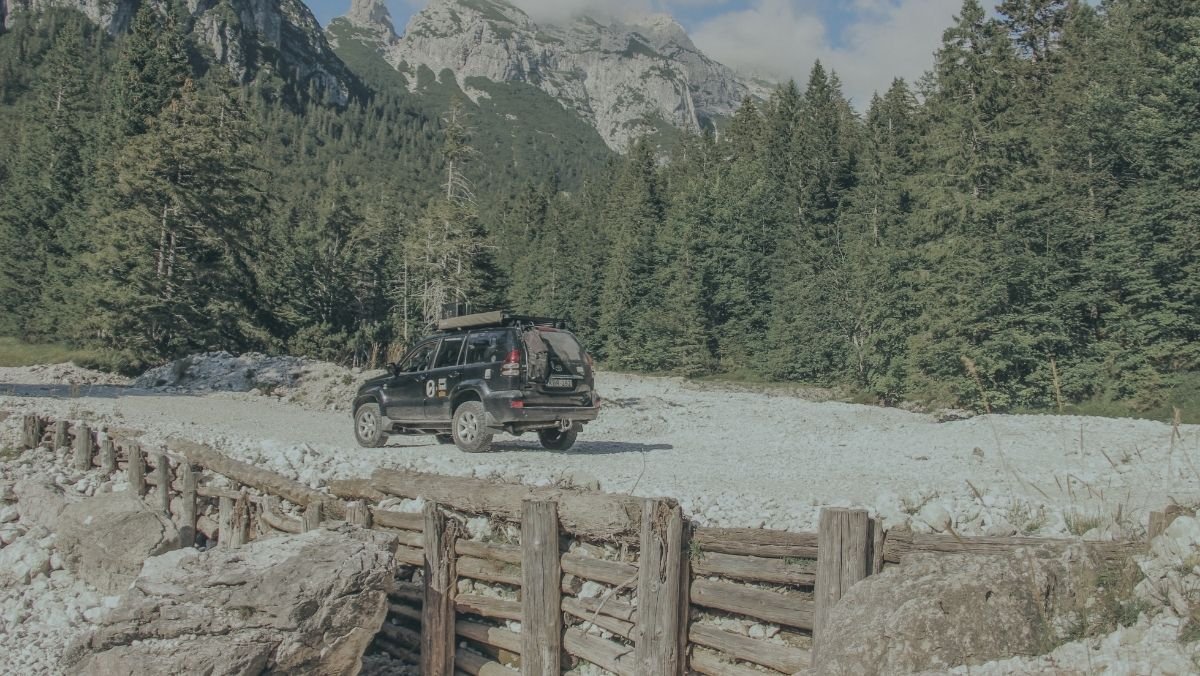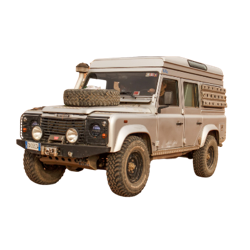Tiny Slovenia is an intensely beautiful country that has been underrated as a travel destination. The almost-landlocked country in Central Europe is bordered by Italy, Austria, Hungary, Croatia, and a 46km slice of coastline on the Adriatic sea. The ability to drive and experience the diverse topography makes this country a truly hidden gem for travelers.
The four major landscapes include the European Alps, the Pannonian and Danubian lowlands and hills, the karstic Dinaric Alps, and the Mediterranean coast.
Since we’re based in Central Europe, we had a chance to visit this gorgeous country several times.
Slovenia is best-explored by car, therefore it’s ideal for overlanders. On motorways, you will need a vignette, a sticker showing the road fees are paid, but it’s best to take a 4-wheel-drive vehicle and avoid motorways and main roads completely.
As a visitor, you have an easy life. Slovenian is the official language, but most people also speak English, German or Italian. For the best weather, visit during the shoulder seasons of Sept-Oct or April-May. Plan for layered clothing in the fall or early spring as the weather quickly changes in the mountain regions.
Slovenia has all types of accommodations from hotels, hostels, guesthouses, and, of course, camping. Wild or free camping isn’t officially allowed, but in the remotest regions, you have no other options. Campgrounds in tourist areas are managed by municipality regulations. However, as mentioned, in a non-tourist area, you may get away with setting up camp in a remote spot. You may also be able to find camper-friendly farms by downloading a PDF guide from Agrocamping.
7 to 9 Day Overlanding Itinerary for Slovenia
Plan on spending at least 7-9 days on your drive through Slovenia. Maribor, the second-largest city is a good starting point. It’s the gateway to the hilly recreational area of Maribor Pohorje to the southwest and the wine-growing regions of Mariborske and Slovenske Gorice to the north and east. Be sure to visit Maribor’s delightful Old Town, then head towards Rogla about an hour’s drive southwest.
Around Rogla
Rogla is best known as a ski resort, but you’ll find plenty of other activities that aren’t related to snow.
There are dirt tracks through the forest, and nine unique hiking trails in the area offer sweeping vistas. You could spend days hiking here, but if time is limited, take the Pohorje Treetop Walk, a wooden walkway featuring a 1,000-meter path built 20 meters above the ground. You will literally be walking through the middle of treetops.
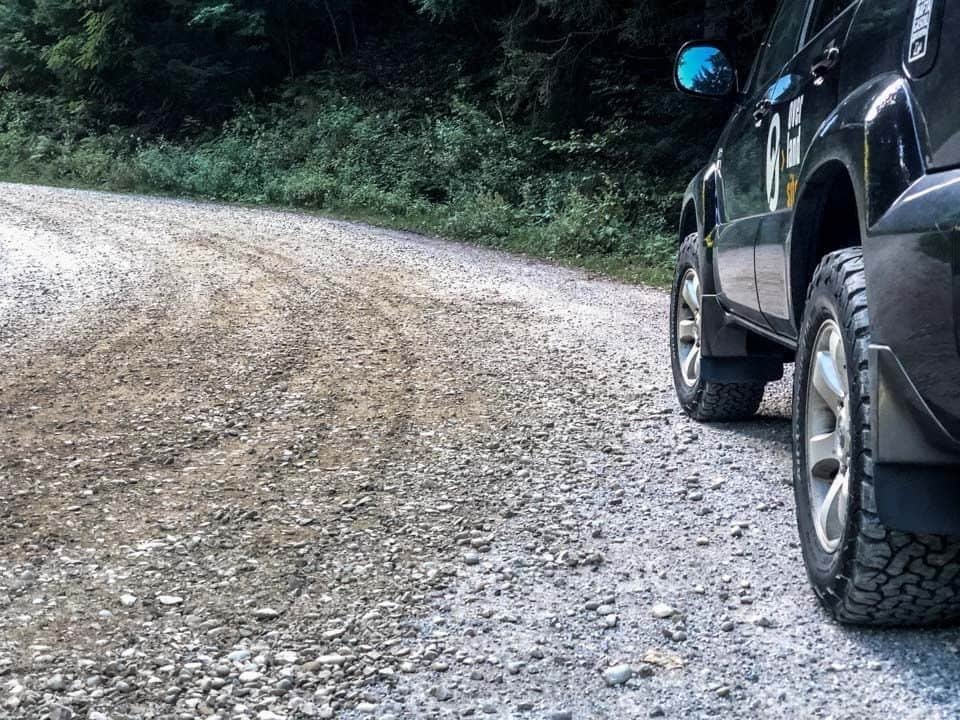
You’ll find a 37-meter tall tower in the middle with panoramic views over the Pohorje Valley. For even more outdoor adventures, Rogla has three major bike trails. Bikes can be rented, or just take your bike with you.
Tržič and Surrounding Villages
After leaving Rogla, visit Tržič and the quaint surrounding villages by heading west. The northwest route is scenic but will take close to three hours. You may opt to take the southwest route which will take about half the time. You’ll pass through the capital city of Ljubljana where you can take in the city’s Old Town and the National Museum of Slovenia.
Tržič also has a charming Old Town with narrow streets and old houses. Park in front of the old abandoned Peko factory and take a peaceful stroll past the statue of a dragon and across a bridge to the center. You’ll reach a small hill with an ancient castle called the Neuhaus with a spectacular view of the surrounding hills.

You’ll find great hiking around the area with rewarding views. The Born Trail starts at the top of the Ljubelj Pass before a tunnel that leads to Austria. It’s an easy trail with a few nail-biting narrow parts. The trail runs mostly through the forest with some open parts for views. The hike takes around an hour oneway. Take your own water and be on the lookout for snakes in the summer.
The nearby village of Golnik is best known for the Golnik University Clinic of Pulmonary and Allergic Diseases. The location, number of sunny days, and good humidity conditions make the area perfect as a healthcare center. Tourists are attracted to the center because a 16th-century castle and a magnificent surrounding park are part of the complex. The park was designed by architect Ivan Vurnik.
Featured Articles
The Julian Alps
From Tržič, drive south and then a couple of hours west to reach the Julian Alps north of Jesenice. The mountain range stretches into Slovenia from Northwestern Italy. The mountains are part of the Southern Limestone Alps and although not the highest, it’s one of Europe’s most spectacular.
Here, you’ll find some of the country’s best hiking and camping. Some trails have striking views of Mt. Triglav while others have peaceful alpine pastoral scenes.
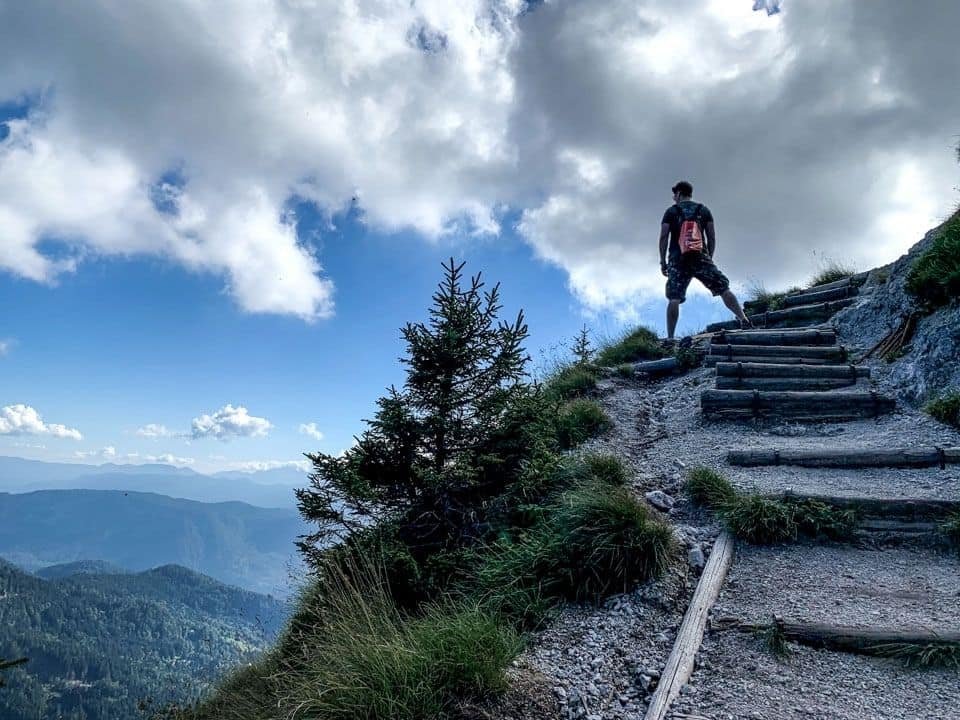
The Triglav National Park is within the Julian Alps. The park has excellent camping sites with access to hiking trails. No wild camping is allowed. To do so could mean a hefty fine. There is no entrance fee, but a few attractions, including Slap Savia and Tolmin Gorge, require a small fee.
Kranjksa Gora
After a day or two exploring the Julian Alps, plan to visit nearby Kranjksa Gora located at the base of the Triglav National Park. The town has an adorable historic district along with a few bars and restaurants.
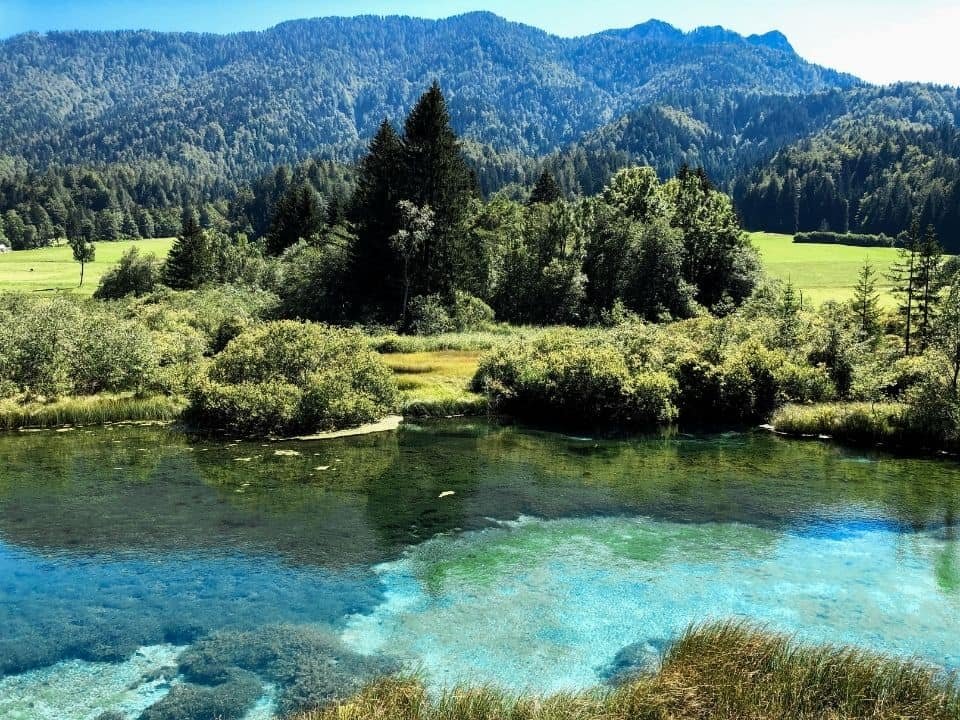
Outdoor adventures include a visit to Lake Jasna to watch the sunrise with orange reflections of mountain peaks, or a refreshing swim on a summer afternoon. Be sure to stop by the tiny Zelenci Nature Reserve, an area packed with natural beauty from crystal clear lakes to striking mountain views.
Vršič Pass
Before leaving the Kranjksa Gora area, a scenic drive over the Vršič Pass is a must-do. It’s only a 23-minute drive south on motorway 206. The pass connects the Sava and Soča Valleys and is Slovenia’s highest road crossing. It features 50 adrenalin-pumping hairpin turns with amazing views from 1,600 meters and more.
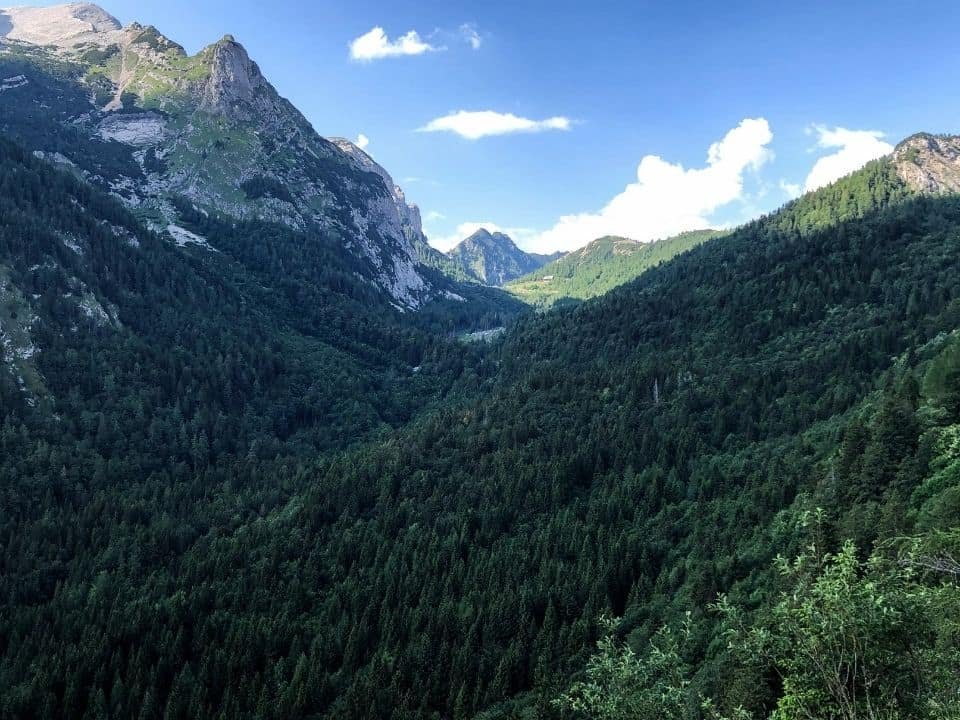
The pass also has an interesting history. It was built as a supply channel for Austro-Hungarian troops battling the Isonzo Front during World War I. The Russian chapel you’ll see here was built to honor the thousands of Russian soldiers who died here while widening the pass.
Bovec and Surrounding Area
After driving the Vršič Pass, you’ll come to the town of Bovec. The surrounding area is stunning with waterfalls, deep caves, and gorges with a backdrop of the peaks of the Julian Alps.
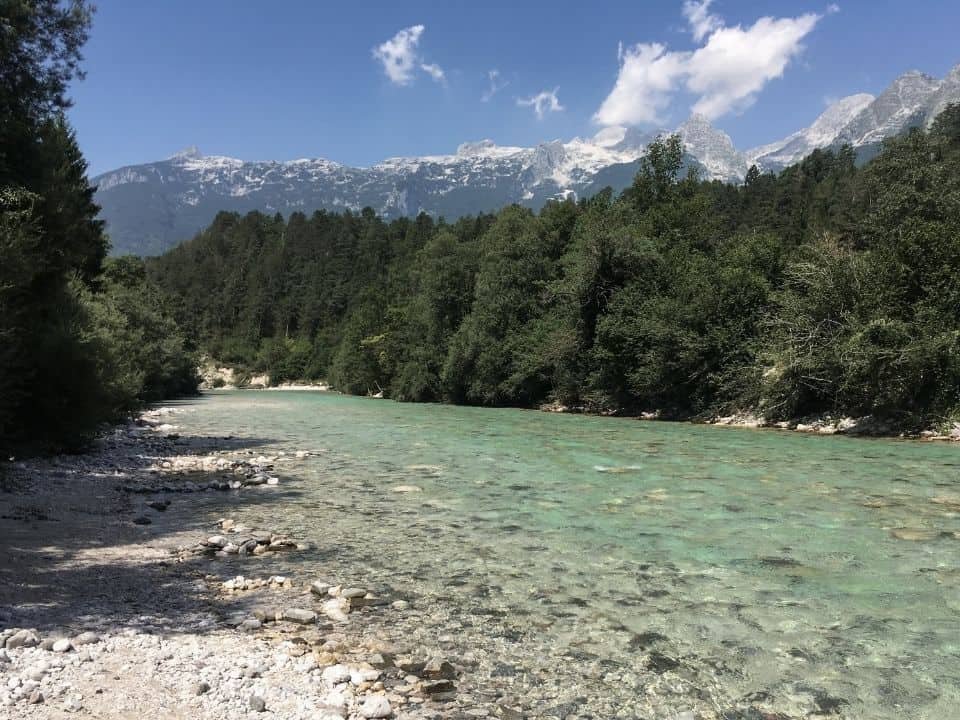
For hiking, the Walk of Peace Trail has sites to commemorate WWI such as the Ravelnik Open-Air Museum. But the most impressive and popular outdoor adventure is white-water rafting.
Book a rafting excursion for an exhilarating ride over Soča rapids. You’ll want to take a selfie at the Boka waterfall. The 106-meter waterfall is the most powerful one in Slovenia.
Mangart
Located less than an hour north of Bovec on route 203, Mangart is definitely worth the drive. At 2,679-meters, it’s one of Slovenia’s tallest mountains and lies along the Italian border. You’ll pass through several small towns before coming to a junction.
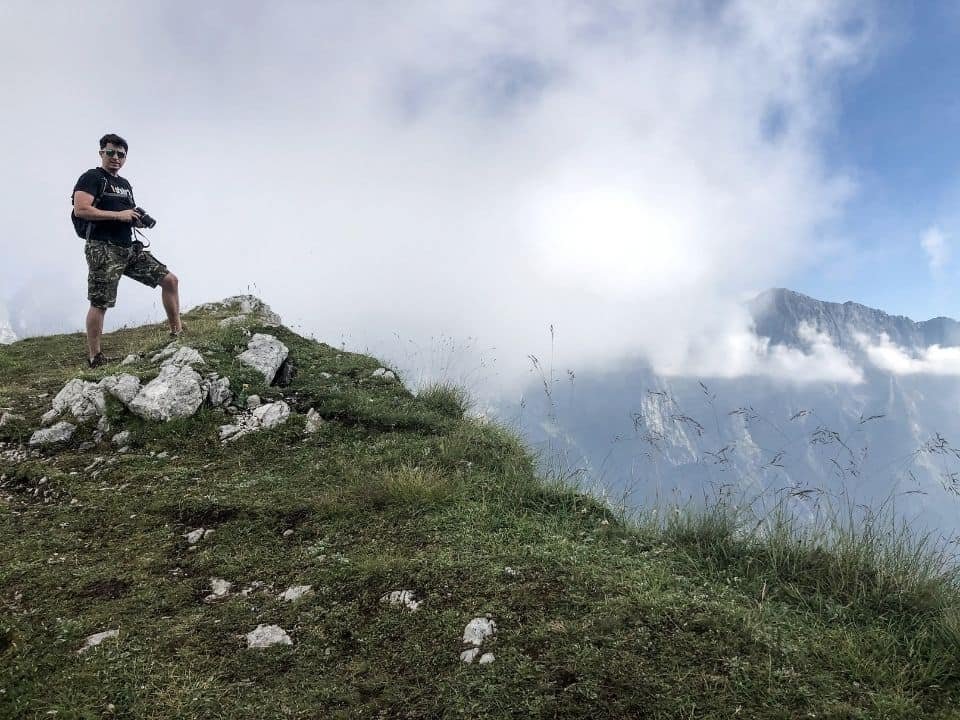
You’ll be charged a 5-euro fee a quarter of the way up. This is a popular scenic spot due to its convenience to reach, so don’t be surprised to find it crowded in the summer. If you want to spend a night or two, you’ll find accommodations in the area including camping in Log Pod Mangartom or in scenic Kobarid.
Napoleon’s Bridge Across the Nadiža River
Taking route 203 again, heading south of Mangart will take you over the famous Napoleon’s Bridge near Podbela. The stone bridge crossing over the Nadiža is a unique archeological and technical accomplishment dating back to 1812. It used to be part of the ancient route from Pradol and Robidišče. Built during Napoleon’s conquests, it bears his name. The bridge has beautiful views over the river, and in the summer, you can even enjoy a swim in a pool of water below the bridge.
Napoleon’s Bridge Across the Soca River
Another bridge named for Napoleon on the route crosses the Soca Rover near Kobarid on the way to Kozjak Falls. The original wooden bridge burned down, and subsequent ones were blown up in war times, so this one is a newer version.
But the views from the bridge trump history. The river here is quite deep and reflects different hues. If you want to hike to the falls, there is parking after the bridge.
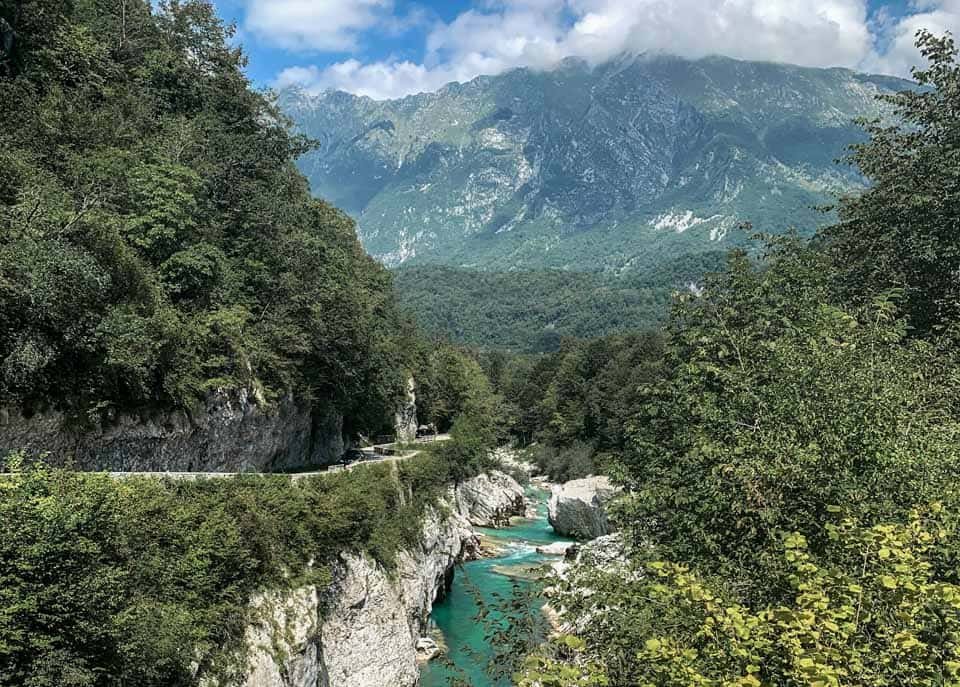
Tolmin
Minutes after passing over the Napoleon Bridges, you’ll arrive in Tomlin where you’ll find exciting outdoor adventures and camping. You can’t miss Tolmin Gorge at the end of Triglav National Park.
The 1km-long gorge was carved by the Tolminka and Zadlassica Rivers. The gorge has two levels. A boardwalk and gravel trail runs along the Tolminka River and ends at a narrow, moss-covered gorge. Or climb the steps to see the Bear’s Head and get a view down the gorge from Devil’s Bridge. It takes about an hour and a half to walk the gorge.
Outdoorsy types will want to do some hiking and whitewater rafting. You may also want to take some time to visit the war memorials and interesting churches around the area. Javorca is an impressive and beautiful WWI monument. For those travel-tired muscles, stop in and relax at one of the thermal spas in the area. And you’ll find no shortage of excellent places to set up camp around the area.
Smartno
Driving southwest from Tomlin, you’ll enter the town of Smartno within 40 minutes. Smartno is a fortified village nestled in the middle of the Brda wine region.

Entering the region from the alps is a breathtaking experience as you drive upon welcoming signs. The landscape and climate here are perfect for growing grapes, and the region has more than 150 wine producers.
Spend some time driving around admiring picturesque vineyards and old villages. You may also want to book a cellar tour. Consider Klet Brda, Slovenia’s largest cellar.
Because of its historical significance, the whole village of Smartno was declared a cultural heritage monument. The town dates back to the middle ages as evidenced by the narrow streets and architecture. Old and new houses are intertwined around the Church of St. Martin, a baroque church with a bell tower and vibrant fresco.
Smartno is surrounded by beautiful views, and the best way to enjoy them is by heading to the Gonjace lookout tower in Gorisk Brda. Built as a memorial monument to WWII in 1961, the 23-meter tall tower has 144 steps and four viewing platforms for 360-degree views.
Heading South To Piran
Driving about an hour and a half south from Smartno, you’ll come to the small, charming town of Piran on Slovenia’s sliver of the Adriatic coast.
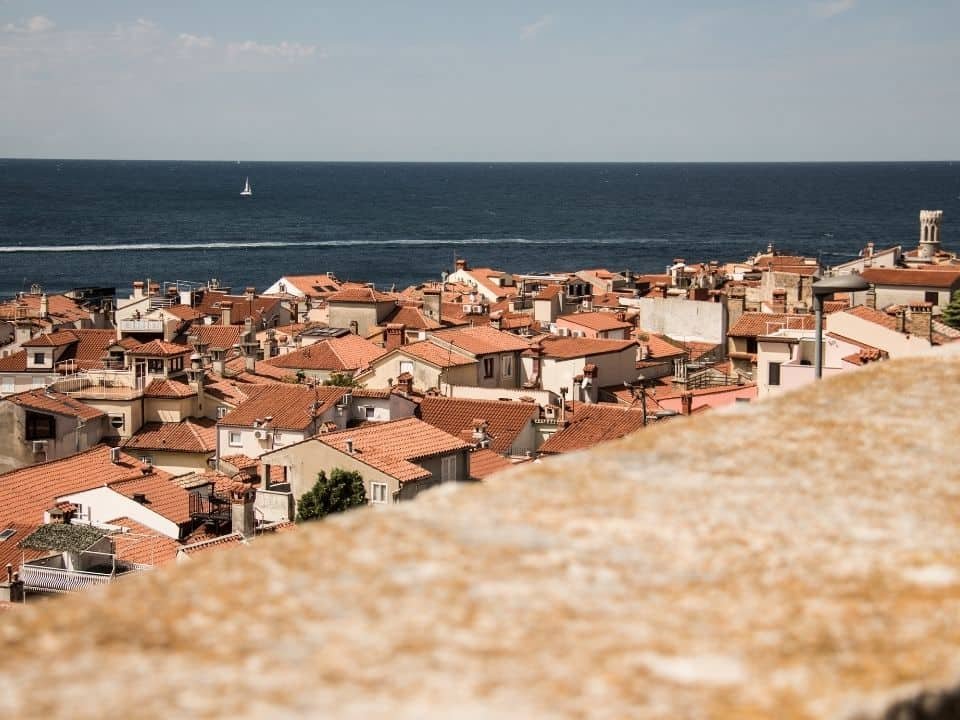
Piran has a well-preserved Old Town to explore. Tartini Square, at the center, is surrounded by lovely homes. The bright red Venitian House, with its surviving Venetian architecture, is the oldest building on the square, and the 14th-century Cathedral of St. George located near the square is the town’s most notable. The church has a small museum, and you can climb the bell tower’s 146 steps for the best views in town.
Piran Beach is small and mostly rocky but offers a quiet place for a swim in the Adriatic Sea in the summer months. Good swimmers can swim from the seaside walk. You’ll find several good campgrounds in the area from a small one near the beach to “glamping” in the surrounding hills.
Skocjan Caves
After camping a night or two around Piran, take the time to tour the Skocjan Caves, one of Slovenia’s must-see attractions. You’ll get there by driving northeast for close to three hours. The huge, fascinating subterranean chambers were carved by the Reka River and are 6km long.
The gorge below the village of Skocjan eventually runs into the Dead Lake and then disappears, surfacing again as a river in Italy 34km away where it empties into the Gulf of Trieste.
To tour the caves, wear good walking shoes and warm clothing. A popular tour called the Through the Underground Canyon is a good one to take. You’ll go down a gravel path to the main entrance and through a long tunnel to the Silent Cave, a dry branch of the canyon, and then to a section called Paradise that features stunning stalagmites, stalactites, and flowstones.
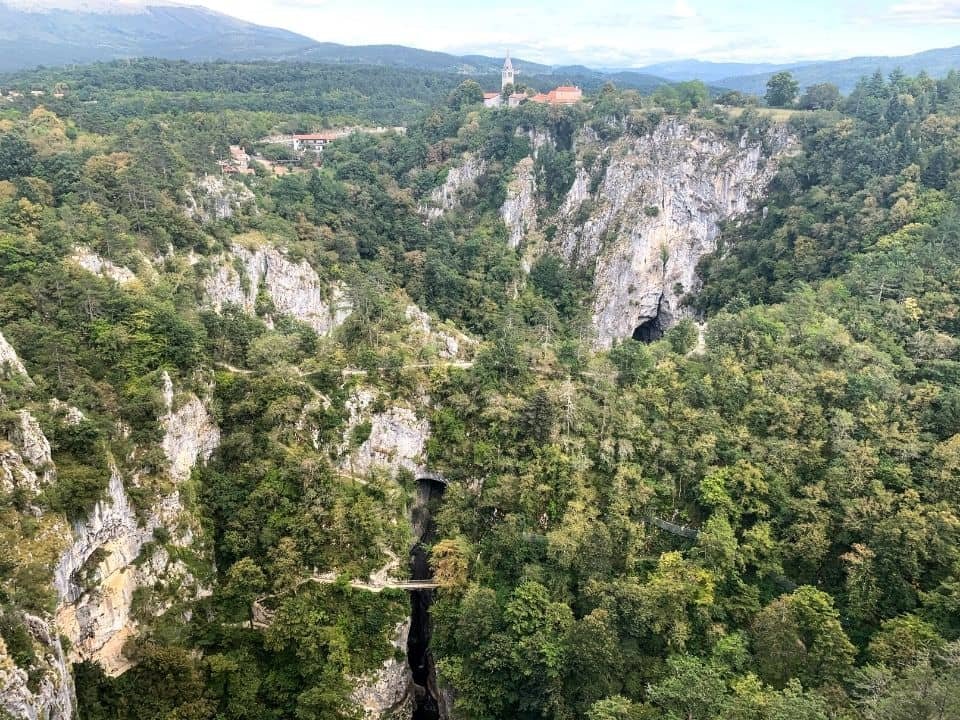
You’ll eventually come to the Great Hall with dripstones, deposits, and massive stalagmites. You’ll hear the rush of the Reka River as you enter the Murmuring Cave. You’ll cross a suspension bridge about 50 meters above the riverbed into Muller Hall.
The last section, called Schmidl Hall, goes into the Velika Dolin, or Big Vally, and past Tominc Cave where you’ll see an unearthed prehistoric settlement. At the end of the tour, a funicular lift will take you back to the entrance if you don’t want to take the 30-minute walk back.
From April through October, a second tour is available. Called Following the Reka River Underground, the tour is either guided or self-guided and follows the path of the Reka River for 2km. The entrance to the cave is a natural one that was carved by the Reka River below the village.
Surprisingly, there is a good amount of plant and animal life in the caves. A tour guide will be sure to point out piles of bat guano. Temps in the caves hover around 12C (53 F).
Around Lake Bled
From the Skocgan Caves, head north to Bled a little over an hour away. If you took the northwestern route from Maribor to Rogla at the beginning of the journey rather than the southerly route, you’ll now have a chance to stop and take in some sights in the capital city of Ljublijana.
Bled is a resort town in the Julian Alps foothills in a setting along Lake Bled, a majestic glacial lake. The 11th-century Bled Castle is perched on a cliff overlooking the lake, and a picturesque church with a bell tower and steep staircase sits atop a small island in the center of the lake. The surrounding area is fairytale-like with dense forests and green meadows.
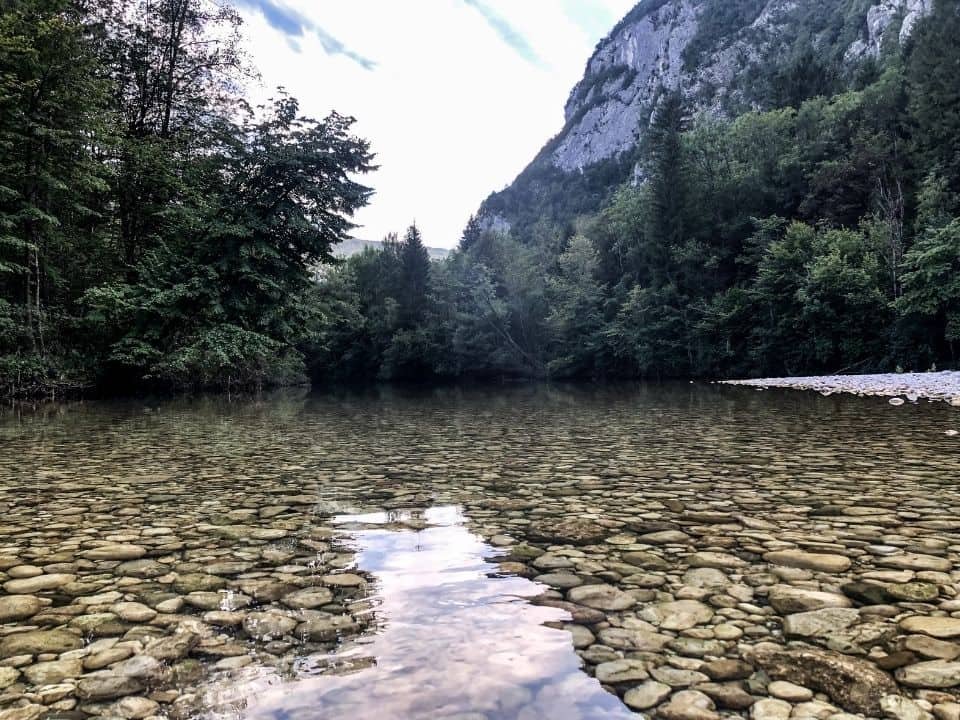
Try to arrange your timing to watch the sunrise over the lake. As the church bells toll, the lake and surrounding hills reflect a glorious golden glow. The best places to watch is on the eastern end overlooking Blejski Otok, or at the Mala Osojnica viewpoint. During the day, enjoy the lake with an easy 6km walk around it or hire a paddleboat.
Don’t leave Bled before sampling the famous Bled Cake. It’s made of flaky pastry and filled with custard and cream. The cakes are sold almost everywhere in town.
Not far from Bled, you will find excellent spots along the Bohinjka River to spend the day relaxing next to pristine, albeit cold water.
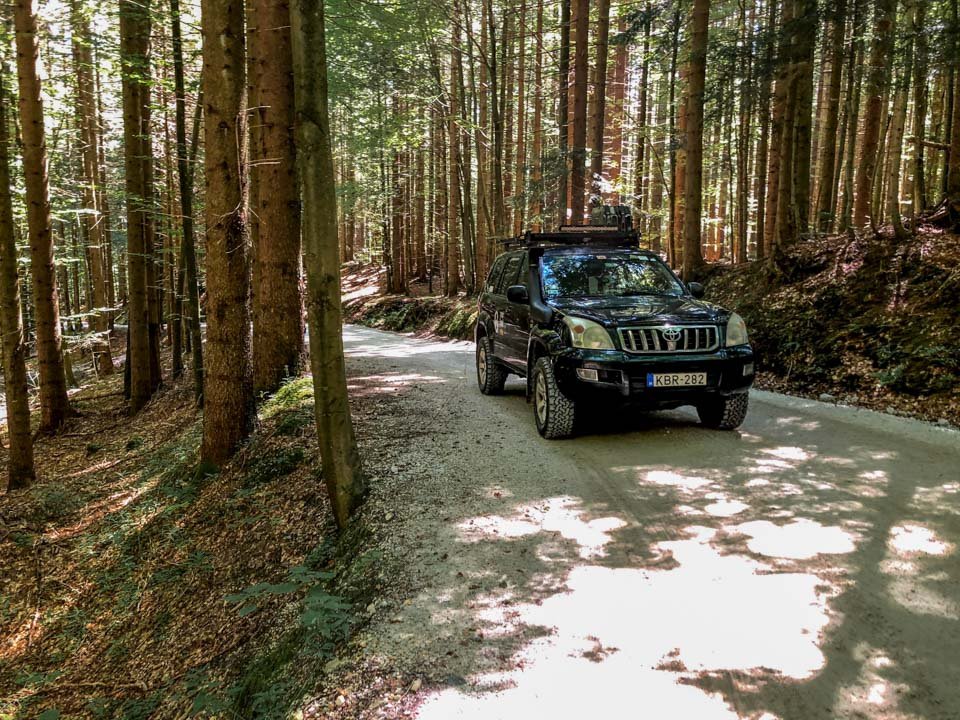
Is Slovenia Your Next Destination?
Slovenia is highly recommended for any traveler but is especially attractive to people who love exploring diverse landscapes with road trips while camping out along the way.
You’ll find excellent ski resorts in winter, and the list of things to see and do in Slovenia is almost endless.
We’re looking forward to exploring even more of this little gem in this hidden corner of Europe. Follow us on Polarsteps to check out our further adventures.

